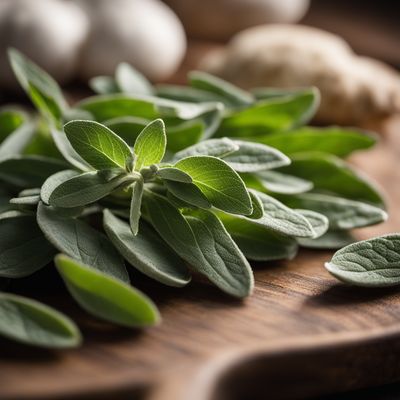
Ingredient
Wintergreen leaves
The Refreshing Minty Herb
Wintergreen leaves, scientifically known as Gaultheria procumbens, are small, glossy, dark green leaves that belong to the Ericaceae family. They possess a distinct minty aroma and flavor, reminiscent of chewing gum or breath mints. Wintergreen leaves are commonly used as a flavoring agent in candies, gums, and oral care products.
Origins and history
Wintergreen leaves have a rich history of traditional use among Native American tribes, who valued them for their medicinal properties. The leaves were often brewed into teas or used topically for their analgesic and anti-inflammatory effects. Today, wintergreen leaves are primarily cultivated for their essential oil, which is used in various industries, including food, pharmaceuticals, and cosmetics.
Nutritional information
Wintergreen leaves are not a significant source of nutrients and are primarily used for their flavoring properties.
Allergens
Wintergreen leaves are not known to be allergenic, but individuals with a known sensitivity to aspirin or salicylates should exercise caution when consuming products containing wintergreen leaves or their essential oil.
How to select
When selecting wintergreen leaves, look for fresh, vibrant leaves that are free from any signs of wilting or discoloration. The leaves should have a strong minty aroma. If purchasing dried wintergreen leaves, ensure they are stored in a tightly sealed container to maintain their freshness.
Storage recommendations
To preserve the freshness and flavor of wintergreen leaves, store them in an airtight container in a cool, dark place. Alternatively, freeze the leaves for long-term storage. Properly stored wintergreen leaves can retain their flavor for up to a year.
How to produce
Wintergreen plants can be grown in gardens or containers, provided they are given the appropriate conditions. They prefer acidic soil, partial shade, and moderate moisture. However, it's important to note that wintergreen plants can be slow-growing and may take several years to reach maturity.
Preparation tips
Wintergreen leaves can be used in a variety of culinary applications, including flavoring candies, gums, and baked goods. They can also be infused into syrups, teas, or cocktails for a refreshing twist. Additionally, wintergreen leaves can be used as a garnish or muddled in beverages to add a minty aroma and taste.
Culinary uses
Wintergreen leaves are commonly used in the food industry and can be found in candies, gums, mints, and various flavored products. They are also available in dried or powdered form for culinary use.
Availability
North America, particularly the northeastern regions of the United States and Canada, is the primary source of wintergreen leaves. They are also cultivated in some parts of Europe and Asia.
More ingredients from this category » Browse all

Thyme and similar-
The Aromatic Herb: Thyme and Its Cousins

Chervil and similar-
"The Delicate Herb: Unveiling the Secrets of Chervil and Similar Ingredients"

White ginger
The Fragrant Spice: Unveiling the Delights of White Ginger

Parsley and similar-
Versatile Herb: Parsley and Similar

Lemon myrtle (fresh herb)
Citrus Sensation

Rosemary and similar-
The Aromatic Herb

Laurel and similar-
Aromatic Leaves: Unveiling the World of Laurel and Similar Herbs

Sassafras leaves
The Aromatic Wonder: Unveiling the Secrets of Sassafras Leaves

Aniseed myrtle
The Fragrant Australian Spice

Sage and similar-
"The Herb of Wisdom: Exploring the Versatility of Sage and Similar Ingredients"

Celery leaves and similar-
The Green Elixir: Unleashing the Power of Celery Leaves

Chives and similar-
Delicate Allium Delights